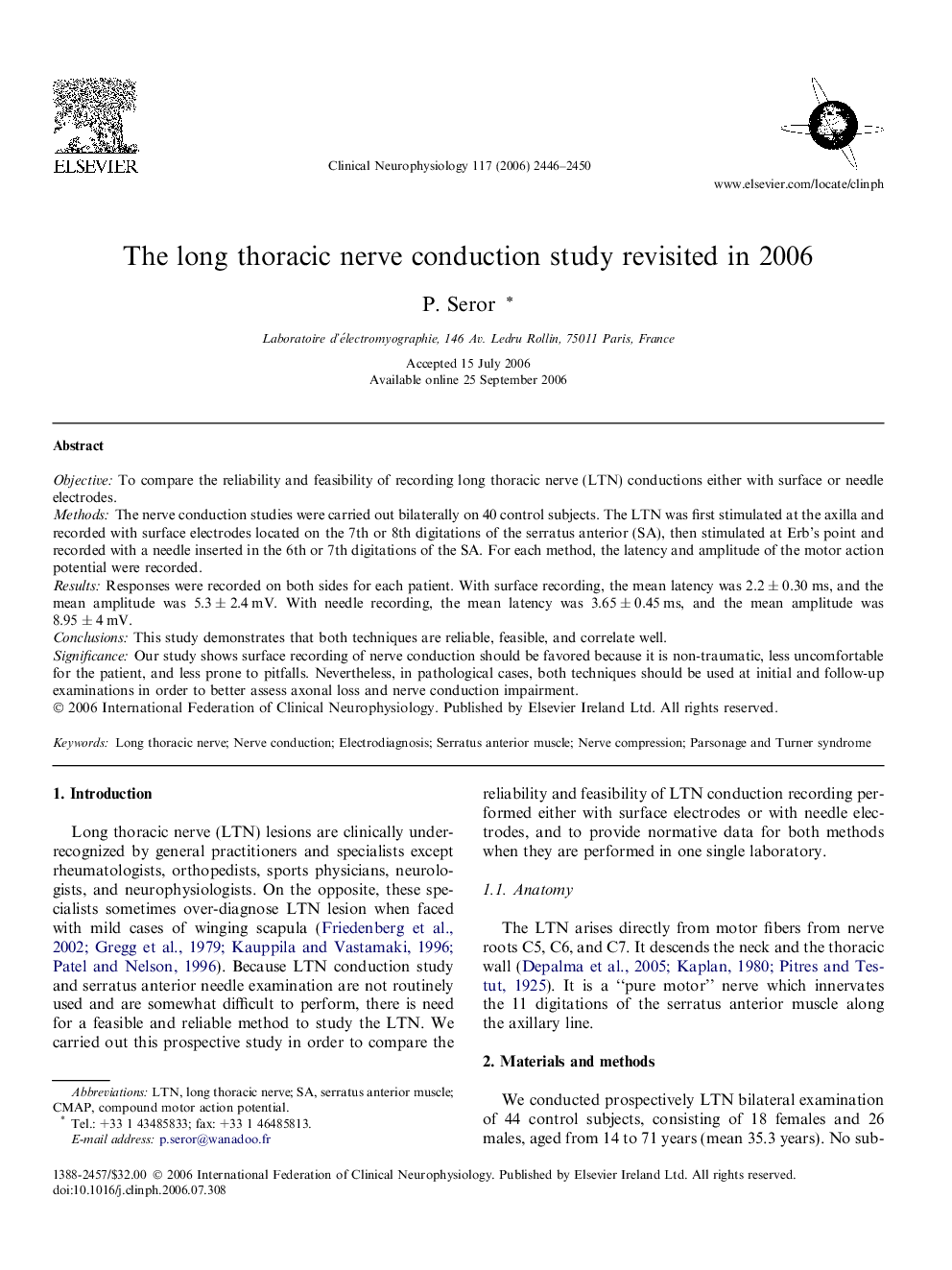| Article ID | Journal | Published Year | Pages | File Type |
|---|---|---|---|---|
| 3048492 | Clinical Neurophysiology | 2006 | 5 Pages |
ObjectiveTo compare the reliability and feasibility of recording long thoracic nerve (LTN) conductions either with surface or needle electrodes.MethodsThe nerve conduction studies were carried out bilaterally on 40 control subjects. The LTN was first stimulated at the axilla and recorded with surface electrodes located on the 7th or 8th digitations of the serratus anterior (SA), then stimulated at Erb’s point and recorded with a needle inserted in the 6th or 7th digitations of the SA. For each method, the latency and amplitude of the motor action potential were recorded.ResultsResponses were recorded on both sides for each patient. With surface recording, the mean latency was 2.2 ± 0.30 ms, and the mean amplitude was 5.3 ± 2.4 mV. With needle recording, the mean latency was 3.65 ± 0.45 ms, and the mean amplitude was 8.95 ± 4 mV.ConclusionsThis study demonstrates that both techniques are reliable, feasible, and correlate well.SignificanceOur study shows surface recording of nerve conduction should be favored because it is non-traumatic, less uncomfortable for the patient, and less prone to pitfalls. Nevertheless, in pathological cases, both techniques should be used at initial and follow-up examinations in order to better assess axonal loss and nerve conduction impairment.
